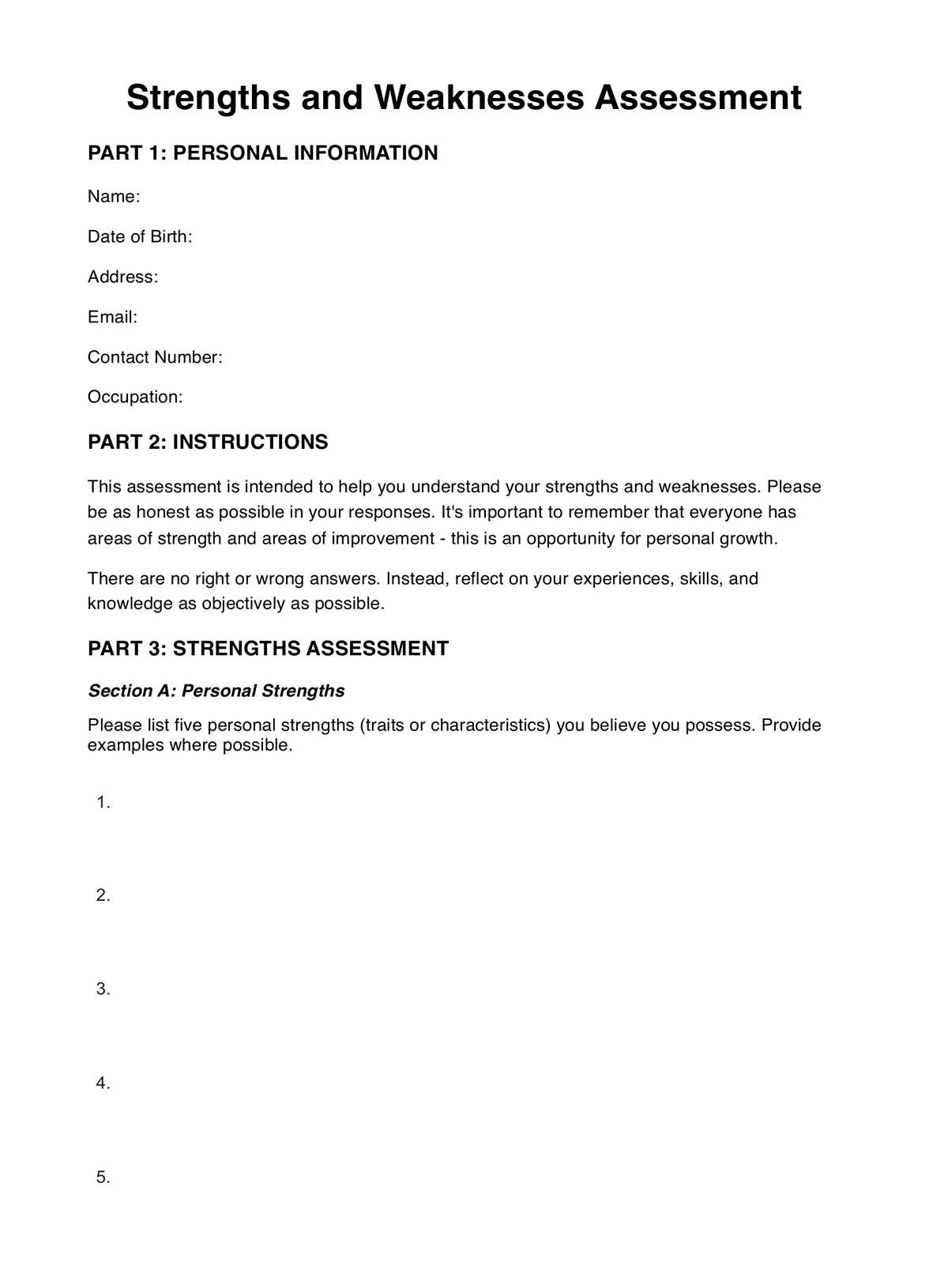This assessment is more about self-reflection than scoring. There are no good or bad responses—rather, it's about understanding yourself better and planning for personal or professional growth.

Strengths and Weaknesses Assessment
Check out our free strengths and weaknesses assessment — a helpful self-assessment tool designed to reveal your core competencies and areas for growth.
Use Template
Strengths and Weaknesses Assessment Template
Commonly asked questions
Anyone can use this assessment! It's a valuable tool for anyone looking to understand their strengths and weaknesses, regardless of their professional status or seeking therapy.
Absolutely. This assessment is a great tool for personal growth and self-understanding, regardless of whether you're enrolled in therapy or a similar program.
EHR and practice management software
Get started for free
*No credit card required
Free
$0/usd
Unlimited clients
Telehealth
1GB of storage
Client portal text
Automated billing and online payments











